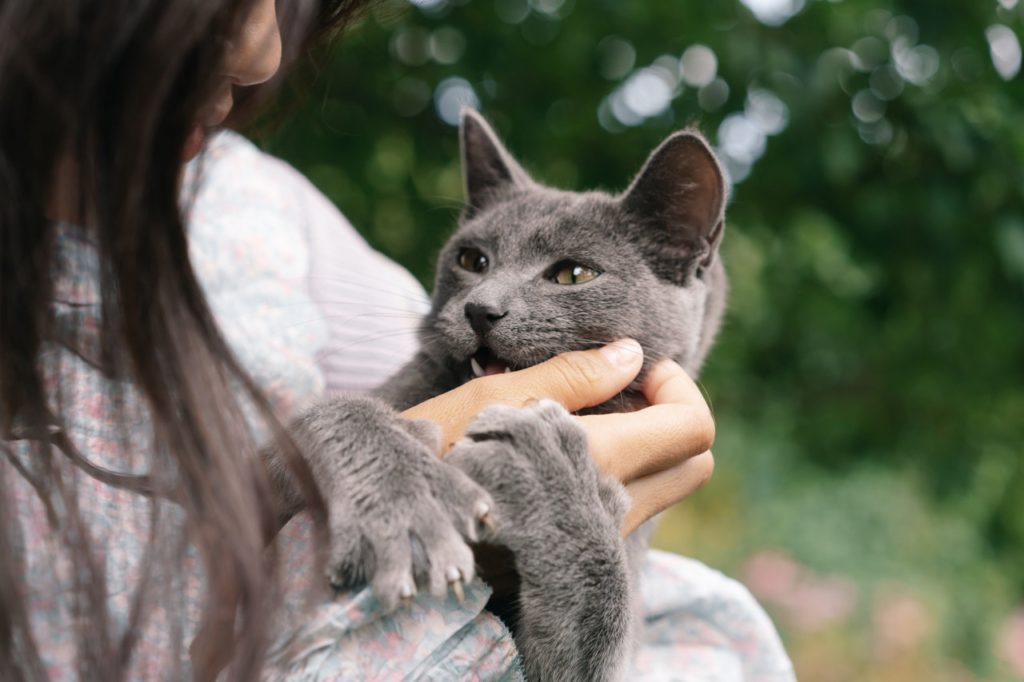
I learned this today. Cats don’t so much retract their claws as lift them off the ground using tendons. Their claws are then hidden by their fur.
Cats have five claws on their front paws and four claws on their back paws. The front claws are usually sharper than the back ones.
Cats’ claws continue to grow throughout their life. In the wild, they scratch them to keep them short and sharp. In the home, they can be trimmed. As a cat’s claws grow, they get dull. When cats scratch something, the outer, duller layer of the claw is pulled off, leaving a sharper edge. When you find claw bits on your carpet, that is only the outer layer of the claw. Big cats also scratch to keep their claws sharp, usually using trees.
Cats use their claws for grip and to balance. They also use them to catch and kill prey. The claws are curved inwards to aid their grip on a struggling animal.
The claws on a cat are connected by tendons. When the cat relaxes the muscles in its arms, the claws lift up. There is a small fold of skin at the end of each of the cat’s toes that sheaths the bottom part of the claw. It doesn’t completely retract, and the end of the claw is covered up by the cat’s fur. If you look at a cat with no fur, you can see the ends of the claws, even when they are retracted.
When the cat needs its claws, it flexes the muscles, pulling the tendons tight, which pulls the claws into fighting position.
There are several reasons why cats retract their claws. The first one is to protect their claws. Their claws stay much sharper if they are not scraping on the ground or being used all of the time.
The second reason is for stealth. Cats can hunt their prey more easily if there is no sound from its claws clacking on the ground. Cats walk on their toes and their claws would get in the way.
An animal that walks on its toes is a digitigrade walker. Humans are plantigrade walkers, which means we use the sole of the foot. Cats’ claws are retracted for walking, but they shape the cat’s toes. If a cat is declawed, it can have trouble balancing. The claw is technically the tip of the toe and removing it will mean that the cat’s feet will touch the ground at an unnatural angle. They will also have less confidence jumping because they use their claws to grip and balance.
Big cats’ claws also retract. Lions and tigers for example. However, Cheetahs’ claws only partially retract. Because they run at such ludicrously fast speeds, they need them for traction.
Cats aren’t the only animals that have retractable claws. Fishers (a type of weasel), viverrids, foxes, and the Japanese Otton frog all have retractable claws.
Other animals that have claws don’t have retractable claws and this is down to the reason why they have claws. Dogs, for example, don’t use their claws to kill prey, but for grip when they are running. Wolves, which dogs are descended from, kill animals with their teeth. They have evolved to run long distances to wear down prey and then jump on it, bringing it down with their teeth. They use their claws to grip the ground so that they can keep running and to grip the animal as they kill it with their teeth. They have no need to be able to retract their claws.
Bears are the same. Depending on the species of bear, their claws are between 7 and 13 cm long. Bears also have no need of retractable claws. Bears in forests use their claws to grip the soil. They also use them to break open rotten logs to find insects and to climb trees. Bears are omnivores, not carnivores like dogs and cats, so their claws are more for grip and defense than for attacking prey. They do come in useful for catching fish.
Polar bears also have long claws, which they use to grip the ice and snow. Polar bears are actually carnivores. This is down to necessity. They need to eat a large number of calories and a lot of seal fat to keep themselves warm in the cold Arctic. Because of this, they have very long claws that they use for gripping seals.
So, the majority of claws are not retractable. Most animals use their claws for traction and gripping and have no need of retractable claws. Cats need retractable claws because of their hunting style. Cats retract their claws by relaxing the tendons in their paws which raises the claws off the ground. When they flex the tendons, their claws come down and extend. And this is what I learned today.
Photo by Mikhail Nilov from Pexels
Sources
https://en.wikipedia.org/wiki/Cat
https://wonderopolis.org/wonder/How-Do-Animal-Claws-Retract
https://www.softpaws.com/fascinating-facts-about-cat-claws/
https://thomsonsafaris.com/blog/animal-claws-out/
https://www.sciencefocus.com/nature/do-big-cats-have-retractable-claws/
https://www.quora.com/Why-didnt-dogs-evolve-to-have-claws-like-cats
https://www.quora.com/Why-didnt-dogs-evolve-to-have-claws-like-cats
https://animals.mom.com/differences-between-lion-paw-bear-claw-7506.html

